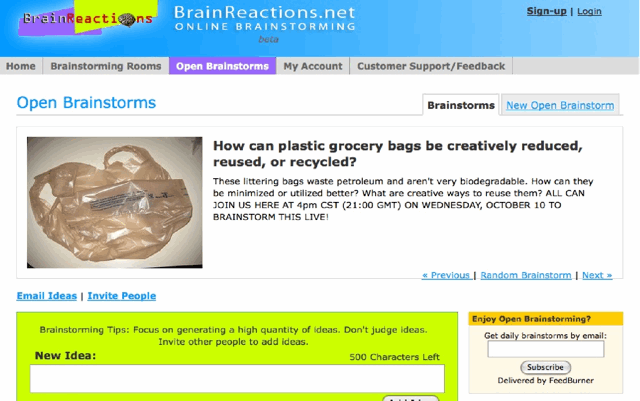One of the key fundamental purposes of the idea generating stage is to generate A LOT of ideas. The more ideas we generate, the more we have to work with to develop concepts. Ideas are like raw materials that have the potential to be developed into something useful with the right process. Plus, we may hit a home run and generate a great idea in the first stage. If a baseball player steps to the plate 200 times they will have a better chance of hitting a homerun then if they just step to the plate 10 times. Their swing will probably get better after those first 10 bats, and so will your ideas. One take away from this stage…more ideas are better. For many of our projects developing new products we create nearly 1,000 ideas. For your project with this activity, 50 would be a good goal.
So, how do you come up with a large number of ideas so you can develop a strong concept? First of all, we do it deliberately and purposefully. If you expect a bunch of brilliant ideas to come to you by chance, you are not going to get very far. You have to set out to come up with these ideas. Schedule time to do it. Plan to do it. Schedule a brainstorm or innovation session time, invite your collaborators, and execute.
You start by selecting a category that you are passionate about, value, and have knowledge or experience in. You come up with many specific problems or opportunities within that category. You turn this problem or challenge into a question. These steps will make the idea generating easier, more focused, and more likely to develop a successful concept. For instance, on a project we did online, we selected the “environment†category and then brainstormed solutions to the plastic bag problem as a question to dig deeper into with ideas. You can view an example of this plastic bag brainstorm.

This process example that you can see includes a question stimulated from a problem, hundreds of generated ideas, collaborated ideas from multiple people, selection and voting of good ideas, and sorting of the most popular ideas. This simple process is valuable for creating better and more innovative ideas. What you want to do now is the fun part, idea generating. Focus on your question and list and number without judgment as many ideas as you can. Ask others to collaborate with you to list ideas as well. Focus on two key rules of brainstorming: 1. Generate as many ideas as possible, and 2. Do not judge your ideas.
So why is it so important to have a process that yields a lot of ideas instead of just one that you get by chance? Generating many ideas is a process-oriented feature of very successful innovation systems in lots of successful organizations. When they develop new products they get many, many ideas in the pipeline. From there, they qualify the ideas and whittle them down into a handful of concepts. After that, they test the concepts while developing them more and may only end up with 1 new product from 100 product ideas. This is how ideation for innovation works. More importantly, when you come up with a large number of ideas it is easier to do good analysis. You can identify some themes that a lot of the ideas shared. Some ideas will lead to new and different ideas. You will learn a! lot fro m looking at all of the ideas from above. You will see the forest from the trees. An innovation process is necessary to develop a better big idea.
Action to take: Start generating a large number of ideas without judgment. Try to list 10 ideas right now for your topic. Brainstorm with a group or come up with a list of ideas for your question on your own. Try to generate over 50 ideas based on your question in time you set aside for a brainstorm.
————
This activity is from BrainReactions Innovation Training. BrainReactions Innovation Training can teach, facilitate, engage, and guide your team step-by-step through this innovation system and over 30 different interactive activities to help you solve your challenges. You can learn our techniques and activities to do again and again on your own and contribute to a sustainable culture of innovation within your organization. Email Dr. Darin Eich at [email protected] to inquire about bringing training and facilitation into your organization or to do an event to capture the ideas of your customers or stakeholders.
The Systematic Idea Generation for Innovation 4 part online workshop series has been popular with 200 different companies seeking to learn the language of innovation and generate new ideas. You can start this webinar series today at http://innovationtraining.org.